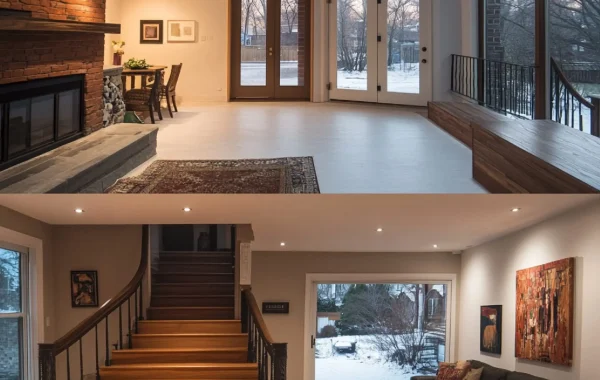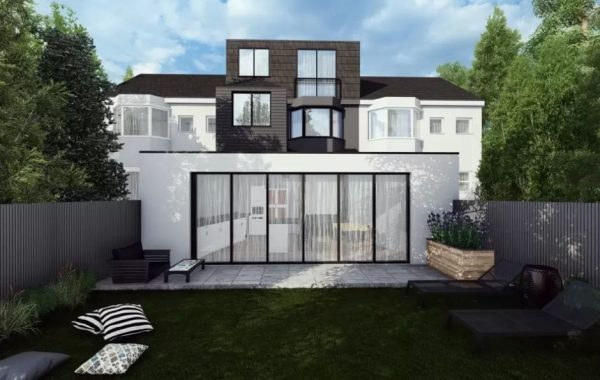Transform Your Home with a Richmond Hampton Hill Basement Conversion: A Vision of Potential
In the heart of Richmond Hampton Hill, where classic charm meets modern sophistication, the potential of your home extends beyond its conventional boundaries. The basement, often an overlooked and underutilized space, holds the promise of transformation. Imagine turning your dimly lit cellar into a stylish sanctuary or a vibrant hub of activity. This guide will unravel the secrets of basement conversion, offering a fresh perspective on how to maximize this hidden gem in your Richmond Hampton Hill home.
Why Consider a Basement Conversion?
1. Unleashing Hidden Potential: Your basement is more than just storage; it’s a canvas waiting to be painted. By embracing a basement conversion, you unlock a realm of possibilities—whether you dream of a chic home office, a cozy entertainment den, or an elegant guest suite. Richmond Hampton Hill’s unique charm can be mirrored in a bespoke basement design, reflecting your personal style while enhancing your living space.
2. Adding Value to Your Property: In the competitive real estate market of Richmond Hampton Hill, a well-executed basement conversion can significantly boost your property’s value. This investment not only enhances your daily living experience but also makes your home more attractive to future buyers, offering a substantial return on investment.
3. Maximizing Space: With property sizes often at a premium, especially in sought-after areas like Hampton Hill, a basement conversion allows you to expand your living space without altering the exterior of your home. It’s an efficient use of existing space, providing room for new activities and needs.
4. Customizing Your Living Environment: A basement conversion provides a unique opportunity to design a space tailored specifically to your needs. From a state-of-the-art home cinema to a tranquil yoga retreat, the design possibilities are endless. This customization ensures the new space perfectly complements your lifestyle.
Steps to a Successful Basement Conversion
1. Initial Assessment: Begin by evaluating your basement’s potential. Examine aspects such as ceiling height, structural integrity, and existing conditions. In Richmond Hampton Hill, many homes are older, so ensure your basement is free from damp and structural issues before proceeding.
2. Define Your Vision: Consider how you want to use your new space. Do you need a multi-functional area, or are you envisioning a specialized room? Defining your vision early on helps streamline the design process and ensures the final result aligns with your expectations.
3. Navigating Permissions: In Richmond Hampton Hill, adhering to local regulations is crucial. Basement conversions typically require planning permission and compliance with building regulations. Consult with your local council and engage a professional architects to ensure all necessary approvals are obtained.
Designing Your Dream Basement
1. Creating an Inviting Layout: Design a layout that maximizes the available space. Open-plan designs can create a sense of expansiveness, while strategic placement of partitions and storage solutions ensures functionality without sacrificing style.
2. Enhancing Light and Airflow: Basements often lack natural light and fresh air. Incorporate elements like larger windows, light wells, or skylights to brighten the space. Adequate ventilation is also essential to maintain a healthy, comfortable environment.
3. Insulation and Comfort: Proper insulation is key to making your basement a cozy retreat. Invest in high-quality insulation to regulate temperature and minimize noise. Consider adding soundproofing materials to enhance the comfort and privacy of the space.
4. Stylish Finishes: The finishing touches bring your design to life. Choose materials that are both practical and stylish, such as moisture-resistant flooring and elegant wall treatments. This is where your vision truly transforms into a tangible space.
The Conversion Process: From Vision to Reality
1. Structural Preparations: The conversion begins with any necessary structural modifications. This may involve reinforcing foundations or modifying existing walls. Ensure these changes are carried out by professionals to guarantee the safety and durability of the new space.
2. Utilities Installation: Plumbing and electrical systems are integral to a successful basement conversion. Expert installation is crucial to ensure functionality and compliance with safety standards. Work with experienced contractors to handle these essential components.
3. Building and Insulating: With the structural and utility work complete, focus shifts to insulation and drywall installation. This step prepares your basement for the final finishes and contributes to a comfortable, energy-efficient environment.
4. Final Touches: The final stage involves applying your chosen finishes, from painting and flooring to installing fixtures and fittings. This is where the basement transitions from a construction zone to a stylish and functional living area.
Conclusion
A basement conversion in Richmond Hampton Hill is more than just a renovation; it’s an opportunity to reimagine your home and enhance its potential. By thoughtfully planning and executing your conversion, you can transform an overlooked space into a vibrant and valuable part of your home. Embrace the possibilities and let your basement become a testament to your creativity and vision.
In Richmond Hampton Hill, where the past and present blend seamlessly, a basement conversion can be the key to unlocking your home’s full potential. Dive into this transformative journey and discover the remarkable possibilities that await beneath the surface.





